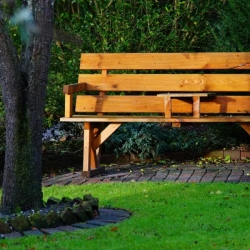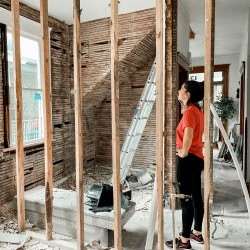Transform Your Swansea Garden: 10 Expert Landscaping Secrets Revealed
Are you dreaming of transforming your Swansea garden into a breathtaking oasis? Look no further! We’re about to unveil 10 expert landscaping secrets that will revolutionize your outdoor space. From stunning hardscaping techniques to innovative plant selections, we’ve got you covered.
Imagine stepping into your garden and feeling instantly transported to a serene sanctuary. Whether you’re dealing with a tired flowerbed or a blank slate, these tips will help you create the garden of your dreams. We’ll explore:
• Customized garden plans that reflect your personal style
• Mastering hardscaping with retaining walls and elegant pathways
• Selecting plants that thrive in Swansea’s unique climate
• Maximizing small spaces with vertical gardening
• Incorporating water features and strategic lighting for ambience
Get ready to be inspired by incredible before and after transformations. Let’s dive in and unlock the secrets to creating your perfect Swansea garden!
Transform Your Swansea Garden: 10 Expert Landscaping Secrets Revealed
Understanding the Importance of Garden Landscaping
Have you ever looked at your outdoor space and felt a tinge of disappointment? Maybe you’ve dreamed of having a lush, vibrant garden but don’t know where to start. Well, you’re not alone!
Garden landscaping is more than just planting a few flowers here and there. It’s about creating a harmonious, functional, and beautiful outdoor space that reflects your personality and enhances your home’s value.
Imagine stepping out into your backyard and being greeted by a stunning modern garden. Sounds appealing, right?
That’s the power of thoughtful landscaping. It transforms a bland patch of grass into the garden of your dreams.
But why is it so important?
Firstly, a well-designed garden extends your living space. It’s like adding an extra room to your house, but with fresh air and sunshine!
Secondly, it boosts your property’s curb appeal. A beautifully landscaped garden can significantly increase your home’s value.
Thirdly, it’s great for your well-being. Spending time in a lovely garden can reduce stress, improve mood, and even boost creativity.
Lastly, it’s an opportunity to express yourself. Your garden can be a reflection of your style, whether you prefer a neat, manicured look or a wild, natural feel.
In Swansea, where we’re blessed with a mild climate and beautiful natural surroundings, the possibilities for garden landscaping are endless.
From coastal-inspired gardens that echo the beauty of Swansea Bay to modern, low-maintenance designs perfect for busy city dwellers, there’s a garden style for everyone.
So, are you ready to unlock the secrets of garden transformation? Let’s dive in and discover how you can turn your outdoor space into a slice of paradise!
Key Takeaways: Garden landscaping is a powerful tool that can transform your outdoor space, increase your property value, and improve your quality of life.
Secret 1: Designing a Customized Garden Plan
Ever stared at your garden and thought, “I need a new garden idea”? Well, you’re in the right place! Designing a customized garden plan is like creating a roadmap for your dream outdoor space.
But where do you start?
First, take a step back and look at your garden from a different angle. Sometimes, a change in perspective is all you need to spark creativity.
Think about your intent. Turn your thoughts to how you want to use your garden. Is it for relaxation, entertaining, or maybe growing your own veggies?
Now, let’s break this down into manageable steps:
Assessing Your Garden’s Current State
Start by taking a good, hard look at your garden. Are there tired flowerbeds that need a refresh? Maybe there’s a blank spot crying out for some attention?
Don’t be discouraged if things look a bit shabby. Every great garden starts somewhere!
Take note of:
– Sunny and shady areas
– Soil type and quality
– Existing plants and features
– Any problem areas (like poor drainage)
This assessment will help you understand what you’re working with and what needs to change.
Incorporating Personal Style and Functionality
Now comes the fun part – injecting your personality into your garden!
Think about your material choices. Do you love the rustic charm of natural stone, or are you more drawn to sleek, modern materials?
Consider the forms of plants you prefer. Do you like neat, sculptured shrubs or wild, meadow-like flowers?
Remember, your garden should be an extension of your home and personality. Don’t be afraid to mix styles if that’s what you love!
Some ideas to consider:
– Create zones for different activities (e.g., dining area, play area, quiet reading nook)
– Incorporate your favorite colors through flowers or painted features
– Add personal touches like artwork or unique planters
The key is to balance aesthetics with functionality. A beautiful garden is great, but a beautiful garden that you can actually use and enjoy is even better!
As you plan, keep Swansea’s climate in mind. Our mild, but often wet weather means some plants will thrive while others might struggle.
Remember, a good garden plan evolves over time. Don’t be afraid to start small and add or change things as you go along. The joy of gardening is in the journey, not just the destination!
Key Takeaways: A customized garden plan should reflect your personal style and functional needs while working with your garden’s existing conditions and Swansea’s climate.
Secret 2: Mastering the Art of Hardscaping
Ever heard of hardscaping? It’s the unsung hero of garden design! Hardscaping refers to the non-living elements in your garden, like patios, walls, and pathways. It’s what gives your garden structure and makes it usable all year round.
In Swansea, where we often face unpredictable weather, hardscaping can be a real game-changer. Let’s dive into some key elements:
Creating Stunning Retaining Walls
Retaining walls are not just functional; they can be a stunning feature in your garden. They’re perfect for tackling sloped gardens, which are common in hilly Swansea.
Here are some ideas:
– Use natural stone for a rustic, timeless look
– Try concrete wall blocks for a modern, sleek appearance
– Consider an interlocking block system for easy installation
Remember, the weight of the retained soil is crucial. For higher walls, you might need professional help to ensure stability.
Designing Elegant Pathways
A well-designed pathway can guide visitors through your garden, showcasing your favourite spots. In Swansea, where we often deal with rain, a good path is essential.
Consider these options:
– Large stone paths for a grand, natural look
– Gravel paths for a budget-friendly, drainage-friendly option
– Stepping stones for a whimsical touch
Pro tip: Use a laser level when laying your path to ensure it’s even and prevents water pooling.
Incorporating Freestanding Walls
Freestanding walls can divide your garden into ‘rooms’, create privacy, or serve as a backdrop for plants. They’re like the walls of your outdoor living room!
Here are some ideas:
– Build a low garden wall to edge a patio or flowerbed
– Create an outdoor freestanding wall as a feature piece, perhaps with a built-in bench
– Use a wall as a canvas for climbing plants or an outdoor art piece
Remember, the key to great hardscaping is to blend it seamlessly with your softscaping (plants and grass). It should enhance, not overpower, the natural elements of your garden.
When choosing materials, consider how they’ll weather in Swansea’s climate. Some materials may look great initially but deteriorate quickly in our damp conditions.
Lastly, don’t forget about drainage. Proper drainage is crucial in hardscaping to prevent water damage and ensure your structures last for years to come.
Key Takeaways: Hardscaping provides structure and functionality to your garden, with retaining walls, pathways, and freestanding walls serving both practical and aesthetic purposes when designed thoughtfully.
Secret 3: Selecting the Right Plants for Swansea’s Climate
Choosing the right plants is like picking the perfect outfit – it needs to suit the occasion, or in this case, the climate! Swansea’s mild, maritime climate offers unique opportunities and challenges for gardeners.
Let’s explore how to make the most of our local conditions:
Native Plants That Thrive in Swansea
Native plants are the superstars of any garden. They’re adapted to our local climate, which means they’re easier to grow and maintain. Plus, they support local wildlife!
Some native beauties to consider:
– Foxgloves: These tall, elegant flowers add a touch of whimsy to any garden
– Bluebells: Perfect for creating a carpet of colour in shaded areas
– Gorse: A hardy shrub with bright yellow flowers, great for coastal gardens
Did you know? The National Botanic Garden of Wales, just a short drive from Swansea, is a great place to see these native plants in action!
Drought-Resistant Options
While Swansea isn’t known for its droughts, we do get dry spells. Having some drought-resistant plants in your garden can help it stay lush even during those grass-killing drought periods.
Consider these water-wise options:
– Lavender: Not only drought-resistant but also fragrant!
– Sedum: These succulents come in various colours and shapes
– Ornamental grasses: They add movement and texture to your garden
Pro tip: Group plants with similar water needs together. This way, you’re not overwatering some while underwatering others.
Ornamental Grasses for Visual Impact
Speaking of grasses, let’s give them a moment in the spotlight! Ornamental grasses are a secret weapon in garden design. They’re low-maintenance, add year-round interest, and can create stunning visual effects.
Try planting large blocks of ornamental grass for maximum impact. Some options that do well in Swansea include:
– Pampas grass: For a dramatic, architectural look
– Blue fescue: Adds a pop of cool color
– Zebra grass: Features fun striped leaves
Remember, when selecting plants, consider more than just their looks. Think about their mature size, growth rate, and care requirements. A plant that’s beautiful but needs constant attention might not be the best choice if you’re short on time.
Also, don’t be afraid to mix and match! A combination of native plants, drought-resistant options, and ornamental grasses can create a diverse, interesting garden that looks great all year round.
Lastly, remember that your garden is a work in progress. It’s okay to experiment and change things up if certain plants aren’t thriving. That’s all part of the fun of gardening!
Key Takeaways: Selecting plants that are native to Swansea, drought-resistant, and include ornamental grasses ensures a garden that’s both beautiful and well-adapted to local conditions.
Secret 4: Innovative Use of Lawn Spaces
Who says a lawn has to be a boring expanse of grass? Let’s shake things up and turn that new flattened ground into something extraordinary!
Reducing Lawn Size for Easier Maintenance
Let’s face it, mowing can be a chore. But what if you could spend less time pushing a mower and more time enjoying your garden?
Here’s how:
– Replace parts of your lawn with low-maintenance ground covers. Ever tried to mow monkey grass? You don’t need to!
– Create islands of planting beds within your lawn. These break up the space and reduce mowing time.
– Consider artificial turf for hard-to-maintain areas. It’s come a long way and can look surprisingly realistic!
Remember, less lawn doesn’t mean less green. It just means more time to enjoy your outdoor space!
Creating Interest with Varied Textures
Why settle for a flat, one-dimensional lawn when you can create a tactile wonderland?
Try these ideas:
– Incorporate different types of grass. Mix fine-leaved fescues with broader-leaved varieties for a tapestry effect.
– Add rock edging around your lawn. It’s not just pretty – it makes mowing easier too!
– Plant clover or chamomile in parts of your lawn. They’re soft underfoot and add visual interest.
Imagine walking barefoot through your garden, feeling different textures beneath your feet. Sounds lovely, doesn’t it?
Incorporating Functional Areas
Your lawn isn’t just for looking at – it’s for living on! Let’s make it work harder for you.
Consider these functional additions:
– Create a designated play area for kids or pets. Use different coloured grass seeds to mark it out.
– Design a cozy reading nook with a comfortable outdoor chair and a small side table.
– Set up a discreet area for your garbage cans, screened by ornamental grasses or a trellis with climbing plants.
Pro tip: Use that dead grass strip along pathways or driveways to your advantage. Plant it with tough, low-growing plants that can handle foot traffic.
Remember, the goal is to create a lawn that’s not just a sea of green, but a multifunctional space that enhances your lifestyle.
Think about how you use your outdoor space. Do you love to entertain? Maybe dedicate part of your lawn to an outdoor dining area. Are you a gardening enthusiast? Why not turn a section into a cut flower garden?
The possibilities are endless! With a bit of creativity, your lawn can become the most versatile and exciting part of your garden.
And don’t forget – changes don’t have to be permanent. Start small, experiment, and see what works best for you and your family. Your perfect lawn is just waiting to be discovered!
Key Takeaways: Innovative lawn design focuses on reducing maintenance, adding textural interest, and incorporating functional areas to create a versatile and exciting outdoor space.
Secret 5: Maximizing Small Garden Spaces
Don’t let a small garden cramp your style! With clever design, even the tiniest outdoor space can become a green oasis. Let’s explore how to make the most of every inch.
Vertical Gardening Techniques
When you can’t go wide, go up! Vertical gardening is a game-changer for small spaces.
Try these ideas:
– Install a living wall system for a lush, green backdrop
– Use trellises or arbours for climbing plants. A trained fruit tree can be both beautiful and productive!
– Hang pocket planters on fences or walls for instant greenery
Imagine transforming a blank wall into a cascading garden of colours and textures. It’s like art, but alive!
Multi-functional Design Elements
In a small garden, every element should earn its keep. Let’s make your garden work double-duty!
Consider these clever solutions:
– Use a short retaining wall as both a planter and extra seating
– Install a fold-down table on a wall or fence for dining or potting plants
– Create a water feature that doubles as a birdbath
Remember Greg’s oyster shell sculpture? It’s a perfect example of how garden art can also serve as a focal point and conversation starter.
Creating Illusions of Space
Sometimes, the trick is to make your garden feel bigger than it is. It’s all about fooling the eye!
Try these optical illusions:
– Use mirrors to reflect light and create the illusion of more space
– Paint your fence a light color to make it recede visually
– Create an amazing view by placing larger plants at the front and smaller ones at the back
Pro tip: Use the new flattened ground to your advantage. A smooth, level surface can make a small space feel larger and more cohesive.
Remember, small gardens have their advantages too. They’re cozy, and easy to maintain, and you can pack a lot of personality into a compact space.
Think about how you want to use your garden. Do you need a quiet spot for morning coffee? A place to grow herbs for cooking? A play area for kids? With smart planning, you can fit it all in!
Don’t be afraid to think outside the box. A vertical herb garden on your kitchen wall? Why not! A mini putting green instead of a lawn? Go for it!
The key is to make every element count. Choose plants that offer multiple seasons of interest. Opt for furniture that can be easily stored or serves multiple purposes.
And remember, a small garden can still have a big impact. With the right design, your tiny garden could become the envy of the neighbourhood!
Key Takeaways: Maximizing small garden spaces involves utilizing vertical space, incorporating multi-functional elements, and creating illusions of space to transform even the tiniest outdoor area into a versatile and inviting garden.
Secret 6: Water Features for Tranquility
Ever dreamed of having your own little oasis? A water feature might be just what your garden needs! Let’s dive into how you can add a touch of tranquillity to your outdoor space.
Types of Water Features Suitable for Swansea Gardens
Swansea’s mild climate is perfect for a variety of water features. Here are some ideas to get you started:
– Pond: A classic choice that can support aquatic plants and even fish
– Fountain: From simple birdbaths to grand centrepieces
– Rill: A narrow channel of moving water, perfect for modern gardens
– Waterfall: Create a focal point with the soothing sound of falling water
Did you know? The white lady bank rose is a great climber to plant near water features. It adds a romantic touch to any garden!
Maintenance and Sustainability
Water features are beautiful, but they do require some care. Here’s how to keep yours looking great:
– Use native aquatic plants to help keep the water clean naturally
– Install a pump with a timer to save energy
– Collect rainwater to top up your feature, reducing water usage
Remember, the key is to work with nature, not against it. A well-designed water feature should enhance your garden’s ecosystem.
Integrating Water Features with Existing Landscape
Your water feature should feel like a natural part of your garden. Here’s how to achieve that:
– Use local stones or pebbles to edge your water feature
– Plant moisture-loving plants around the edges to soften the transition
– Consider the view from different angles, including from inside your house
Pro tip: That left bed you’ve been wondering what to do with? It could be the perfect spot for a small pond or fountain!
Water features aren’t just pretty to look at – they offer numerous benefits:
– They attract wildlife like birds and beneficial insects
– The sound of water can mask unwanted noise, creating a peaceful atmosphere
– They add humidity to the air, which many plants love
When planning your water feature, think about scale. A tiny fountain might get lost in a large garden, while a big pond could overwhelm a small space.
Also, consider safety, especially
Conclusion
As we wrap up our journey through the 10 expert landscaping secrets for transforming your Swansea garden, it’s clear that creating your dream outdoor oasis is within reach. From mastering hardscaping techniques to selecting climate-appropriate plants, each tip offers a pathway to elevate your garden’s aesthetic and functionality. Remember, the key to a successful transformation lies in thoughtful planning, sustainable practices, and a touch of local flair.
By incorporating these expert insights, you’re not just improving your garden; you’re crafting a personalized retreat that reflects your style and Swansea’s rich horticultural heritage. Whether you’re working with a compact urban space or a sprawling rural property, these strategies can be adapted to suit your needs.
As you embark on your garden transformation journey, keep in mind that patience and persistence are your allies. The before and after examples we’ve shared demonstrate the incredible potential lying dormant in every garden. So, grab your tools, unleash your creativity, and watch as your outdoor space blossoms into the garden of your dreams. Your Swansea oasis awaits!








